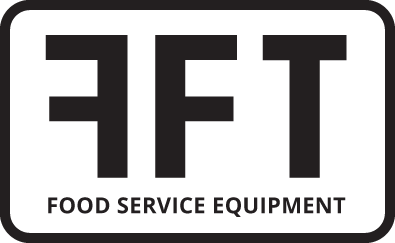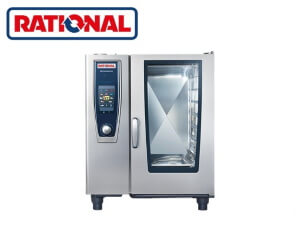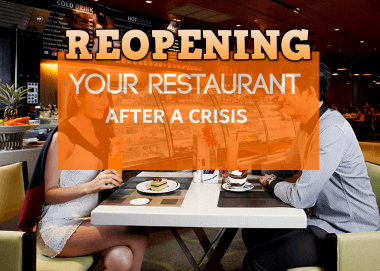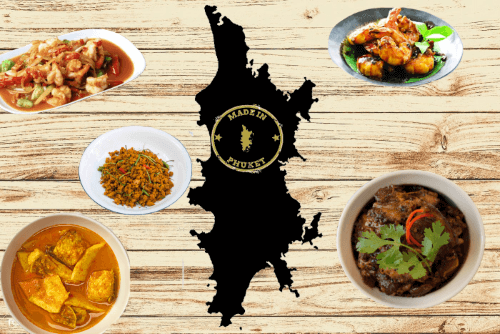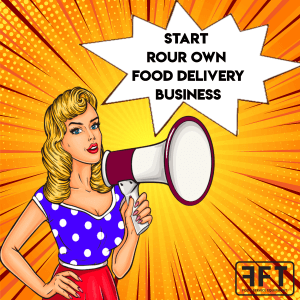How to open a restaurant
How to open a restaurant?
With 60% of the people eating out at least once a week, the restaurant industry continues to thrive. While foodservice trends come and go, it’s certain that many people will continue to enjoy meals prepared outside of the home. Starting a restaurant takes a lot of work, but with expert planning, you can start a successful restaurant business.
How to Start a Restaurant
Opening a restaurant requires juggling many moving parts and can feel like a difficult undertaking. But the procedure is a more manageable feat when broken down. If you’re curious about how to open a restaurant, we’ve created an 11-step guide to navigate you through the process.
1) Choose a Brand and Restaurant Concept
 When starting a restaurant, it’s important to have a clear brand and concept. Your restaurant concept includes the service style of your restaurant, the food you serve, and the ambiance of your restaurant. This goes hand-in-hand with your brand, which forms your restaurant’s identity, personality, and mission. Your brand is the intangible force behind your restaurant concept, and your restaurant concept is kind of like your brand in action.
When starting a restaurant, it’s important to have a clear brand and concept. Your restaurant concept includes the service style of your restaurant, the food you serve, and the ambiance of your restaurant. This goes hand-in-hand with your brand, which forms your restaurant’s identity, personality, and mission. Your brand is the intangible force behind your restaurant concept, and your restaurant concept is kind of like your brand in action.
Based on your brand and concept, your dining room should express a specific atmosphere and tell the outside world who you are. This will add a memorable extra value and experience for the people wanting to come back. Choosing a unique and functional concept that targets a certain demographic is among the most important factors in creating your concept and brand.
Are you a romantically lit, relaxing-casual spot that is outfitted in a lounge atmosphere? Or are you a Mediterranean restaurant adorned with fresco paintings on the walls? Are you a budget food restaurant with a killer cocktail list and frequent live music? The energy, word choices, and attentiveness of your staff will also communicate what your restaurant is about.
2) Make Your Menu Items
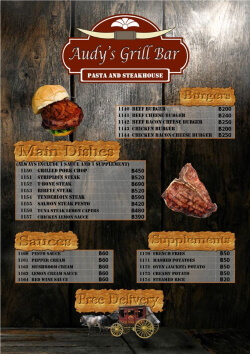 Before you open your restaurant, you’ll want to establish some basic food items that your menu will feature. Deciding what will be on your menu is important when figuring out the equipment you need, the staff you will hire, and the people you wish to attract.
Before you open your restaurant, you’ll want to establish some basic food items that your menu will feature. Deciding what will be on your menu is important when figuring out the equipment you need, the staff you will hire, and the people you wish to attract.
Your menu doesn’t need to be completely designed, your recipes don’t need to be completely worked out, unless your whole concept singles out certain item(s), like a pizza place. However, you should have a solid idea of the fare you will serve at your restaurant. Later in the process of opening your restaurant, you should adapt your menu to increase profits and continually update your menu as you gain information and feedback about which food items sell well and which do not.
3) Write a Restaurant Business Plan
Writing a thorough restaurant business plan is essential for reaching to investors and applying for restaurant loans to start your restaurant. It will also help you develop your strategy and flesh out the feasibility of your restaurant’s details. Below are the main components of a restaurant business plan.
- Executive Summary
- Company Overview and Description
- Market Analysis
- Business Offerings
- Management
- Marketing and Public Relations Strategies
- Financial Projection
4) Obtain Funding (if needed)
Estimate the total startup costs you will need to get your restaurant started and the amount needed to keep your restaurant functioning on a day-to-day basis. You should then create a budget and predict the next year to know how much you will need to stay in business.
After this, assess how much money you have available to use as startup funding, and determine how much more you will need. Remember to include the costs of any licenses you need. Consider applying for restaurant loans to obtain funding to cover your restaurant’s costs.
5) Choose a Location and Lease a Commercial Space
 Choose the location for your new restaurant, next features are among the most important ones:
Choose the location for your new restaurant, next features are among the most important ones:
- Visibility and accessibility. Select a spot that can be seen easily by those walking or driving by. You should also look for busy areas that gets plenty of passersby. In addition, consider if there is parking and ease of access by foot or car, motorbike.
- Ensure the target market of your restaurant matches the demographics of the area.
- Labor costs and minimum wage. It’s important to ensure that the labor costs of an area don’t cut into your profits. Based on the location, you want to have an idea of what employees might expect to earn.
- The competition of the area. Some nearby competition can help with marketing. But it’s wise to have enough of a distance that you can still guarantee a solid pool of customers who won’t be easily attracted to another similar place.
We recommend leasing a location when it comes to choosing a space. It will allow you more flexibility in the case that you decide to expand or have other businesses issues or changes as you first started out.
6) Permits and Licenses
You’ll need to obtain several country / states related local permits and licenses. It can be worthwhile to have legal counsel when filing for restaurant permits and licenses to make sure you complete every necessary step.
7) Find an Equipment and Food Supplier
 You will need a constant, reliable source of equipment and ingredients at reasonable prices to ensure restaurant success. A wholesale restaurant supplier, like us, can help you find many of your needs in one place. We specialize in budget as in high-quality restaurant equipment and have a full-time customer service team who are experts on our products.
You will need a constant, reliable source of equipment and ingredients at reasonable prices to ensure restaurant success. A wholesale restaurant supplier, like us, can help you find many of your needs in one place. We specialize in budget as in high-quality restaurant equipment and have a full-time customer service team who are experts on our products.
8) Design a Restaurant / kitchen Layout
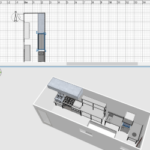 When planning a restaurant, you’ll need to put serious thoughts into how you can organize your entire layout to meet the goals in your menu and theme. Your primary target should be to create a systematic and logic flow from front-of-house to back, from the receiving hostess all the way back to the kitchen. We can help you, with our designing services. Once your basic layout is established, you can design and decorate your dining room.
When planning a restaurant, you’ll need to put serious thoughts into how you can organize your entire layout to meet the goals in your menu and theme. Your primary target should be to create a systematic and logic flow from front-of-house to back, from the receiving hostess all the way back to the kitchen. We can help you, with our designing services. Once your basic layout is established, you can design and decorate your dining room.
9)Hire the Right Staff
 A major step of opening a restaurant is hiring staff to carry out the operation of your restaurant every day. Think about all roles that need to be filled in your restaurant before hiring staff. This may include human resources management and supervisors, food and beverage purchasing, receiving and storing products, food preparation, foodservice, food cleaning and dishwashing, marketing and sales, public relations, accounting and auditing, and bar services.
A major step of opening a restaurant is hiring staff to carry out the operation of your restaurant every day. Think about all roles that need to be filled in your restaurant before hiring staff. This may include human resources management and supervisors, food and beverage purchasing, receiving and storing products, food preparation, foodservice, food cleaning and dishwashing, marketing and sales, public relations, accounting and auditing, and bar services.
For both front- and back-of-house staff, look for candidates with prior experience and an excellent ability to multitask and to work quickly and efficiently. All employees should work well with others and be able to stay calm under pressure. Front-of-house staff in particular should have well ongoing social skills.
The list will vary based on the unique needs of your restaurant, there are a few fundamental positions you will need to fill when opening your restaurant:
- Executive chef
- General manager
- Sous chef
- Prep cooks
- Servers
- Bartenders
- Hosts
- Food runners and bussers
- Dishwasher
10) Advertise Your Restaurant
Advertising is a critical element for various reasons. First, prospective customers should be able to find basic information about your restaurant. Secondly, they need to feel enthusiast to try out your new eatery. Below are some tips to create excitement or hype around your restaurant:
- Use social media. Create Facebook, Twitter, and Instagram accounts to share news, photos, and foodie news about your restaurant. The photos and descriptions should communicate your brand. Consider including images of food or ‘behind-the-scene’ stories to draw in potential guests. Make sure to use high-quality pictures.
- Build an attractive website. Your site should be easy to navigate, and the design should represent your brand. Include basic information about your restaurant, including your address, phone number, hours, and menu.
- Create a TripAdvisor account for your restaurant. Potential guests will easily be able to find your restaurant if it’s listed on TripAdvisor, as it is a directory for businesses. Guests can also leave opinions after visiting. Since it is a well-known website, joining this website will also increase your authority, especially if you have a high rating and positive feedback.
- Put an ad in the local paper or magazine. This will help create awareness about your new restaurant. You could even try and get a featured story or mention in an article.
- Use a loyalty program. You can let people sign up to your restaurant up for a loyalty program card that will appeal to the growing number of consumers who bring in new customers. Through this system, you can engage guests by rewarding them for continuously business.
- Create an email list. When sending out creative emails that communicate your brand, it’s essential to use relevant content for each group of customers. For example, sending dine-in specials to reservation customers or sending delivery coupons to online ordering customers are both great ideas.
- Offer promotions to new guests. Give first-time guests a free drink or small dessert. Customers will remember your exceptional hospitality, and they will be more likely to recommend your restaurant and to return themselves.
- Consider hosting a grand opening and other events. This can take place after your soft opening or in place of it. You can host other events to create continued buzz around your restaurant, such as wine tastings, live music, cooking classes, or themed fixed menus.
If you require some help to setup your marketing campain, contact us!
11) Host a Soft Opening
You’ve heard the old saying “Practice makes experience.” The same goes for restaurant openings. Consider hosting a soft opening for a limited number of people before opening your restaurant’s doors to the public. This “test run” allows you to evaluate on specific meal times to see where your staff could be more efficient. From private parties for friends and family to sneak peeks, there are several soft launch strategies. Here are a few ideas:
- Offer a “try-out” menu that offers half of what is on your complete menu. It reduces stress on new staff, and encourages customers to come back to see the full menu reveal.
- Don’t operate all day. Consider offering just breakfast and lunch for 4 days, then dinner on the fifth.
- Host a “sneak peek” happy hour with select menu items and signature drinks/foods.
- Hold a ‘only friends and family’ opening with complimentary dishes, with the intent of inviting them to help train your staff.
- Hold a soft opening for neighboring homes and businesses. This will help you gain local fans, in the hope that they will return feedback and suggest your restaurant to visiting friends and colleagues.
Getting your new restaurant up can feel like a huge and difficult task. However, as the restaurant industry continues to grow, and foodservice trends continue to diversify, there is always room for another special place or original eatery. With detailed planning, choosing your partners wisely and successful execution of your unique ideas, your restaurant business can flourish. Contact us for more information, after all we are here to help you succeed.
